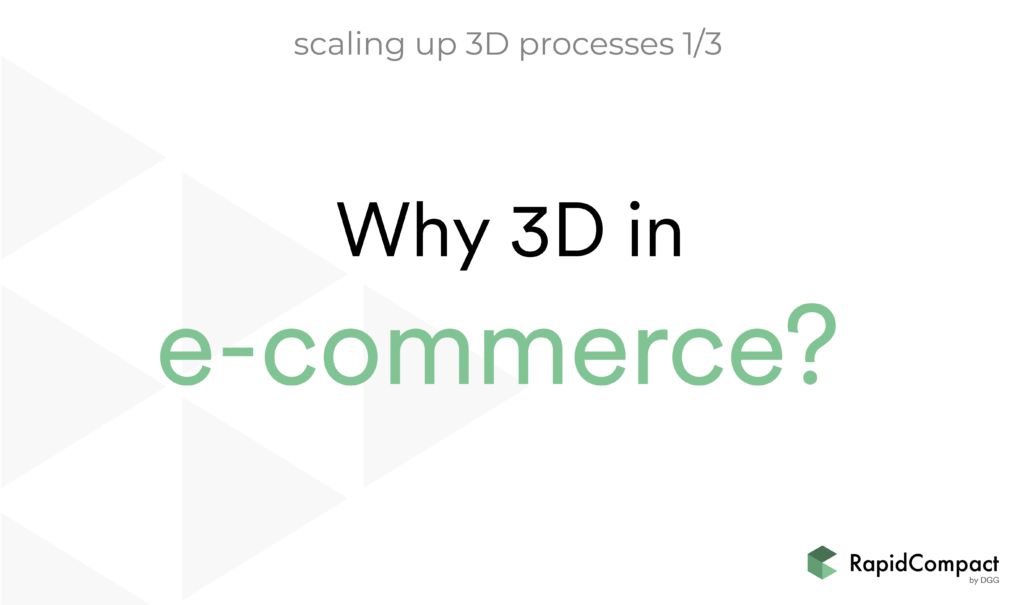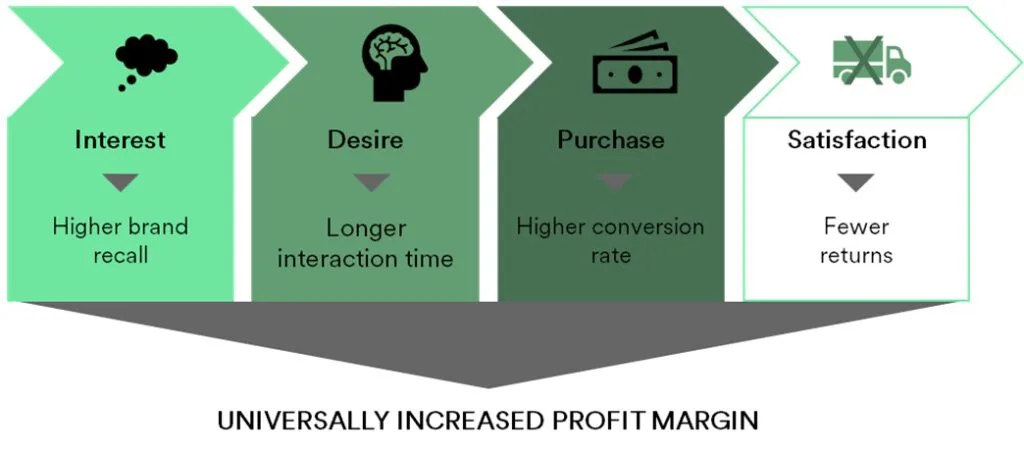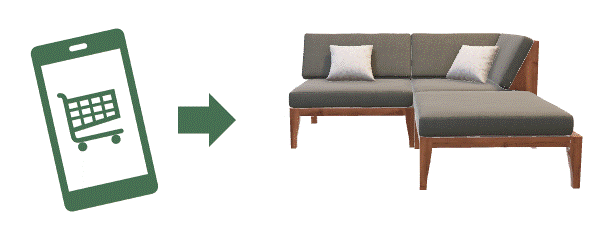
In the past, 3D technology innovations were driven by the demands of the gaming and entertainment industries. Now we are seeing a new driver for the future application of 3D technology: the e-commerce sector. Retailers have been curious for some time about the benefits of visualizing their products in real-time 3D, and recently the big players that have shown their commitment to 3D include IKEA, Shopify and Amazon.
This article will give you an insight into the benefits 3D brings to e-commerce, explore why 3D will transform the retail industry entirely and what challenges are connected to it.
Looking at a digital 3D model gives an excellent impression of the real-life object. It has many advantages over only viewing a plain 2D image. You can play around with the product, see how the lighting behaves on the surface, zoom in and out intuitively and inspect the details from all angles. It’s like having a physical object in your hands, but you can view the products digitally from anywhere. With AR technology on your smartphone, you can even look at the product inside your home before making a purchase. To satisfy the extremely high standards of product visualization, the 3D model needs to be viewable in photorealistic quality across platforms.
An obvious question at this point is: “What does this mean in business terms?” Well, to put it short: more profit. This answer alone will not satisfy you, so a bit more of detail on it: Product visualization is an extremely important part of the customer journey in e-commerce. Purchase decisions are made based upon the perceived look of the products and shoppers need to be convinced quickly, meaning that interactive experiences play a huge role within this process. Consumer expectations are created before the product has been shipped, and those need to be fulfilled once the product arrives, otherwise the product may be returned, which creates a lot of additional costs. In fact, high return rate is certainly one of the biggest challenges in e-commerce. Different players in the industry have conducted their own studies to discover the numbers behind these statements. Shopify, for instance, found that using AR technology contributed to a 2X lift in conversions on their merchants’ stores. As you can imagine, the chance of increasing conversion rates and decreasing returns is therefore a major reason why retailers are seeing a huge opportunity to increase their profit through 3D technology. You can learn more on this topic in our whitepaper 3D workflows in global e-commerce.

3D technology has been around for many years and so far, has not found its way into mainstream applications. There are different reasons why a “3D revolution” is now possible. The game industry has played its part in this development, pushing the limits in different fields for decades, but that has only been visible to a relatively small audience. With powerful devices now widespread, smartphones becoming more powerful and users more used to 3D content, retail and online shopping will be able to utilize the benefits of 3D technology on a wider scale, triggering an AR revolution.
 It is possible to show 3D representations of products on mobile devices or on the web.
It is possible to show 3D representations of products on mobile devices or on the web.
It is exciting to see how the challenge of finding an efficient 3D delivery format has been solved through standardization, and how it impacted and enabled the 3D industry in the years afterwards. However, with so many interfaces and diverse requirements for all platforms, it is difficult to scale up 3D production processes in e-commerce. This is another challenge to tackle with united efforts and standardization.
Get in touch at contact@dgg3d.com if you are interested in learning more about RapidCompact.
Upload and process 3D models with the free web demo or get in touch if you have any question. We´re happy to help…
More about RapidCompactTry RapidCompact for FreeEnterprise Solutions